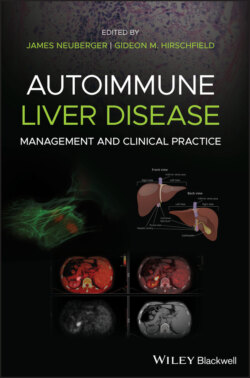Читать книгу Autoimmune Liver Disease - Группа авторов - Страница 63
Critical Role of Epigenetics Transcription Factor Enhancers and Super Enhancers
ОглавлениеGene transcription is an essential process in autoimmunity and autoimmune disease specificity. Emerging evidence indicates that the generation and perpetuation of autoimmunity is primarily driven by epigenetics [16]. Over 90% of the thousands of disease‐associated SNPs detected by GWAS are localized within non‐coding regions of DNA, that produce regulatory enhancers, sometimes occurring in clusters spanning 50 kb of DNA, called super enhancers (SEs). Multiple enhancers and SEs control the expression of protein‐coding genes. These enhancers, especially SEs, are especially important drivers of cell‐ and tissue‐specific genes. Enhancer functions are mediated through transcription‐factor (TF) binding motifs that require TF recruitment and nucleation of transcriptional machinery. Thus, enhancer activity depends on the local structure of chromatin responsible for the packaging of DNA in association with histone proteins. Since tightly packed DNA is inaccessible to DNA‐binding TFs, additional epigenetic mechanisms are required to render DNA accessible to enhancer TFs. These processes include methylation of DNA and posttranscriptional modification of histones through methylation, acetylation, or ubiquitination. Epigenetic proteins also interact directly with transcriptional mechanisms and enhancer DNA can also generate enhancer RNA (eRNA) to increase the amount of enhancer proteins. Epigenetic long non‐coding RNAs (lncRNAs) are expressed within innate immune cells and CD4 Th1, Th2, Th17, Tregs, CD8 and B cells. lncRNAs directly regulate activation and functions of immune cells. lncRNAs promote susceptibility to autoreactivity and perpetuation in autoimmune diseases, including systemic lupus erythematosus (SLE), rheumatoid arthritis (RA), multiple sclerosis (MS), and psoriasis.
